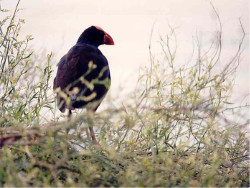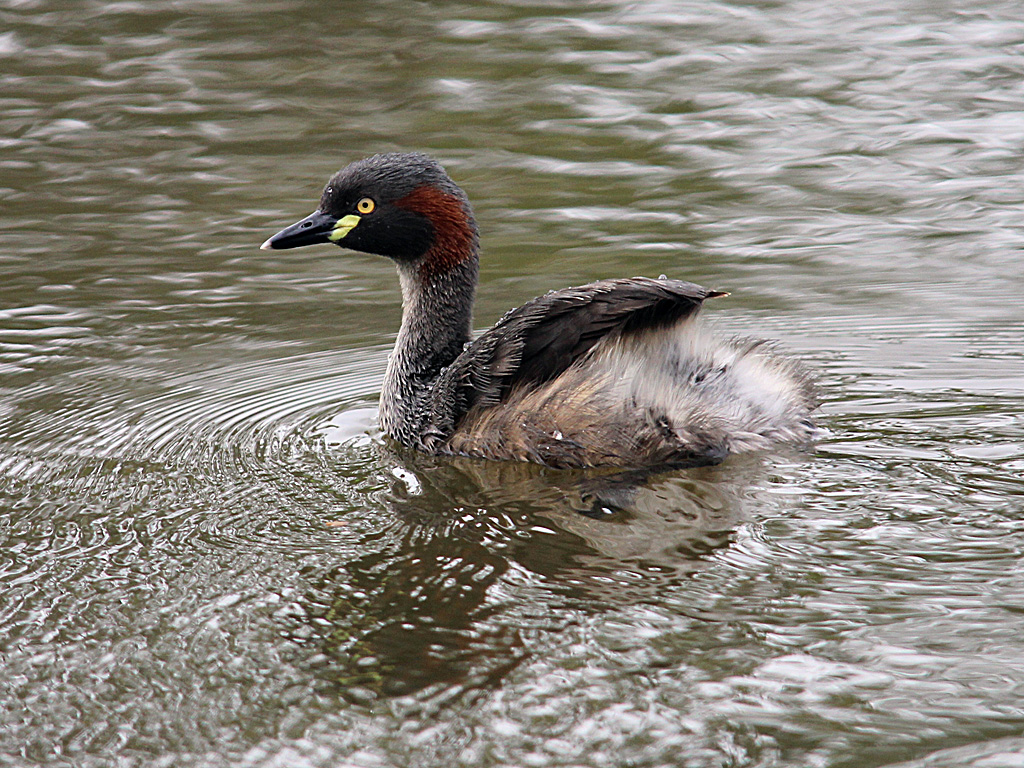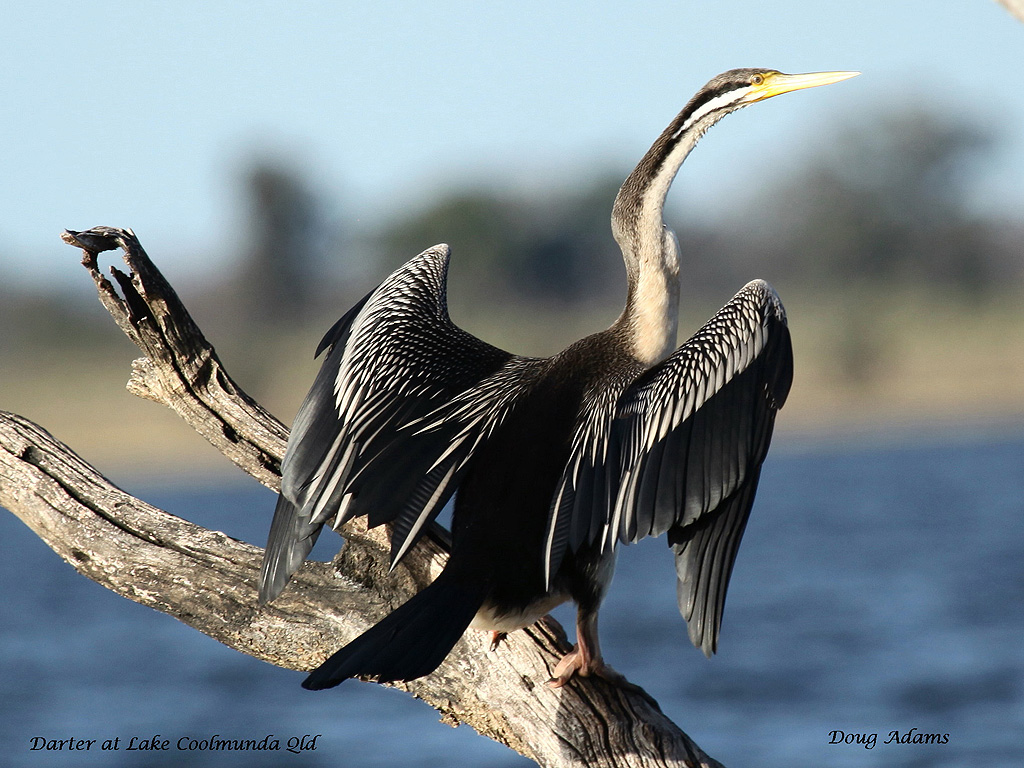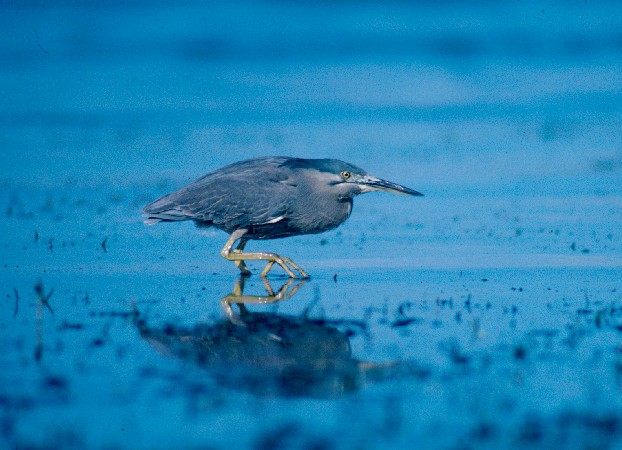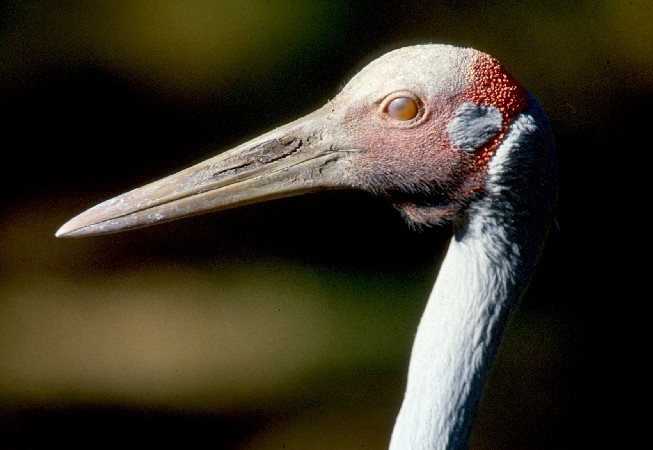|
|
Identifying waterbirdsWaterbirds can be difficult to identify because they are often flying or far from shore. Some of the rails and bitterns normally remain concealed in dense vegetation and thus can be very difficult to find and identify. Many species of waterbird gather at times in large aggregations that present a challenge to observers, but by taking a patient systematic approach, all of the waterbird identities can be determined. Use of a tripod-mounted telescope can be helpful. Some waterbirds are relatively easy to find and to observe, such as swans, geese and ducks. They inhabit open places where they are highly visible; they often remain still for long periods while loafing; and some are very large in size. Quick facts
This section provides information on how to identify certain species of waterbirds. AnseriformesSwans, geese and ducksIdentification of ducks, geese and swans can be complicated because these waterbirds often occur in large numbers and in mixed species flocks. When in flight, different species of ducks can be identified by their distinctive wing-patterns. The three species of whistling-duck occurring in Queensland can be identified by their flank feathers and calls. Freckled duck, female blue-billed duck and female musk duck have dark grey plumage with fine pale flecks but can be separated by bill shape and behaviour (blue-billed duck and musk duck commonly dive). Hardheads have bold white bands in their wings. Wing pattern also helps to separate the two species of pygmy-goose (cotton pygmy goose and green pygmy goose) and to distinguish Pacific black duck, grey teal and female Australasian shoveler. Grey teal and female chestnut teal are particularly difficult to separate. Subtle differences in head colour are important, and without good views it may not be possible to identify individual species. PodicipediformesGrebesThe Australasian grebe and the hoary-headed grebe can be difficult to identify in non-breeding plumage. Fine details of facial and hind-neck plumage and colour of the flanks are key features. The great crested grebe is more easily identified due to it's larger size and distinctive plumage. PelicaniformsCormorants and Australasian dartersCormorants and Australasian darter are black and white birds that can be identified by colour of bill and face, and shape of bill (cormorants have hooked bills; darters have dagger-like bills). Pied cormorant, little pied cormorant and female darter are often misidentified by observers. CiconiiformesHerons and related speciesHerons and related species are some of the largest of our waterbirds and some of the easiest to identify. Plumage, proportions, colour and the use of habitats is sufficient to identify most species. The five species of white egret are generally the most difficult to distinguish. Success depends on careful observation of proportions, such as neck length, and the seasonal variability in colours of the bill, legs and bare facial skin and, when breeding, the arrangement of plume-feathers. Egrets are commonly not identified to species level in aerial surveys. Others requiring extra care in identifying include:
GruiformesBrolga and sarus cranesAlthough large in size, brolgas and sarus crane are difficult to distinguish from each other. Leg colour and the extent of red on the neck are distinguishing features. The adult brolga has a distinctive bulge, called a dewlap, at the throat. Crakes, rails and waterhensMost of the crakes, rails and waterhens can be identified from a combination of calls, plumage and colour of the head and bill. The eight species of crakes and small rails are difficult to identify as they inhabit dense vegetation. However, all except Baillon’s crake have relatively loud distinctive calls that can reveal their presence. Recordings of their calls are readily available, including in digital editions of popular field guides. The Terrestrial Vertebrate Fauna Survey Guidelines for Queensland recommends and outlines the use of call playback to find these birds. Where the concealing vegetation has muddy edges, most crakes and rails may be seen with prolonged watching because they periodically emerge to feed in adjacent shallow water. Some species, such as the pale-vented bush-hen and Lewin’s rail, rarely emerge from the dense cover along creeks. Baillon’s crake and white-browed crake commonly live in floating vegetation such as sedge, grass and/or water lilies. Charadriiformes (shorebirds)Shorebird speciesShorebirds can be particularly difficult to distinguish from each other due to their relatively small size and similar colouration at certain times of the year. Careful close viewing of roosting birds using a telescope should enable identification in most cases. The Queensland Wader Study Group provides detailed guides on identifying shorebird species. General information about shorebirds can be found here Charadriiformes (non-shorebird species)Gulls and ternsGulls and terns can be identified from their head and bill colours as well as from their size and wing markings. Many exhibit different colours in the non-breeding season. About a dozen species of tern could be encountered on or near Queensland coastlines and careful close viewing of roosting birds using a telescope should enable identification in most cases. Four species of tern can be found on inland waters. Of these, the whiskered tern and white-winged black tern may make idenfitication difficult when not in breeding plumage; attention to head markings provides a foundation for identification. In Queensland some terns have Australian-breeding and Asian-breeding populations. For example, the Asian subspecies Gelochelidon nilotica affinis of the gull-billed Tern is smaller and has subtle plumage and bill differences in comparison to the Australian-breeding subspecies. Additional informationSkills in waterbird identification can be enhanced by participating in activities of community organisations dedicated to study of wild birds. These include the national body, BirdLife Australia, which has a number of regional groups in Queensland, and the State organisation, Birds Queensland. The Handbook of Australian, New Zealand and Antarctic Birds provides the most comprehensive information on all aspects of the distribution, identification and ecology of Australian birds, in one publication series. Relevant volumes for other waterbirds are:
Other cited references: Wetlands International 2014b. Waterbird Population Estimates. What is a waterbird population? Online http://wpe.wetlands.org/Iwhatpop accessed 17 June 2014. Last updated: 22 March 2013 This page should be cited as: Department of Environment, Science and Innovation, Queensland (2013) Identifying waterbirds, WetlandInfo website, accessed 25 June 2024. Available at: https://wetlandinfo.des.qld.gov.au/wetlands/ecology/components/biota/fauna/fauna-taxon/birds/other-bird/ |

 — Department of Environment, Science and Innovation
— Department of Environment, Science and Innovation

